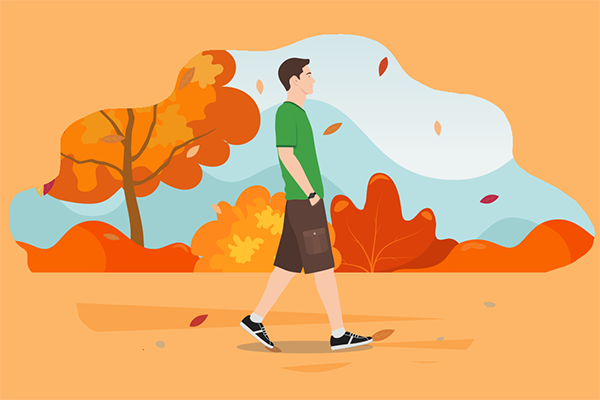You ever wonder why so many people ask “does walking make you taller?” I’ve been writing about height growth for years now, and I still see that question pop up all over forums, YouTube comments, even from teens in my inbox. It’s one of those things that feels like it could be true—because walking seems so natural, so… good for the body. And yeah, in American culture especially, we’re kind of obsessed with anything that might give us an edge in height—especially during those awkward teenage years (been there).
So what’s really going on? You’ll learn how walking connects to posture, spine alignment, and even how gravity interacts with your vertebrae during growth. Let’s dig into the facts—and filter out the hype.
Can Walking Increase Your Height? Here’s What Actually Matters
Let me be real with you—I’ve lost count of how many times I’ve heard, “If I walk more, will I grow taller?” And I get it. It sounds logical, right? You’re upright, moving, stretching your legs. But here’s the thing: walking doesn’t actually make you taller in terms of bone growth—especially once your growth plates are closed (which, for most people, happens by their early 20s).
But—and this is a big but—it can make you look taller. What I’ve found over the years is that walking regularly, especially with good posture, helps decompress your spine a bit (especially after long hours of sitting). When you walk with your shoulders back, core slightly engaged, and head aligned with your spine, you’re essentially stacking your vertebrae in a way that fights gravity—well, temporarily. You might regain half an inch or so that you “lost” from slouching or spinal compression.
So no, walking won’t grow your bones, but it might just help you reclaim your full natural height. I’d say: walk tall, literally. Your body mechanics matter more than you think.

Debunking the Myth: Does Walking Actually Increase Height in Adults?
You’ve probably heard someone say that walking can “stretch” your spine and make you taller—but let’s be honest, that’s not how adult height works. Once your growth plates fuse (usually around your early 20s), your bones don’t lengthen anymore. So no, you won’t suddenly gain an inch just from walking every morning.
Now, here’s the part that does make sense—and it’s what I’ve seen in countless clients and even in my own posture journey. Walking can improve spinal flexibility and help reduce disc compression, which can slightly “restore” height that you lose throughout the day. Think of your spine like a spring—when it’s hydrated, mobile, and properly aligned, it expands more naturally.
Here’s what I’ve personally noticed helps:
- Walking with intention: Keep your head up, shoulders back, core lightly engaged.
- Staying hydrated: Your spinal discs literally depend on water for flexibility.
- Adding stretching routines: Gentle decompression exercises (like hanging or yoga) can help fight daily compression.
- Avoiding slouching habits: It’s amazing how much height poor posture can steal.
So, can adults grow taller? Not really—but you can absolutely look and stand taller by taking care of your spine and posture. And trust me, that confidence shows.

Why You Should Walk Even If It Won’t Make You Taller
Let’s just get this out of the way—walking isn’t going to make you taller (I wish it did, trust me). But here’s what I’ve learned after years of chasing height science and working with people who wanted to grow: walking is one of the most underrated tools for overall health—and it’s free.
What I’ve found is that even when walking doesn’t boost your height, it boosts pretty much everything else that matters. Personally, on the days I skip my walk, I feel it—not just physically, but mentally.
Here’s what walking actually gives you:
- Heart health: Just 30 minutes of brisk walking a day can strengthen your cardiovascular system.
- Joint support: It keeps your knees and hips moving, helps with joint lubrication, and reduces stiffness (especially if you’re over 30—yeah, I said it).
- Stress relief: Endorphins kick in, your mind clears up. It’s like a reset button.
- Inflammation control: Consistent walking helps with blood sugar, which can reduce chronic inflammation over time.
- Weight regulation: It’s low-impact but surprisingly effective, especially when paired with decent sleep and diet.
So yeah, maybe it won’t stretch your spine or unlock your growth plates, but walking every day? That’s still a win—for your body, your brain, and your mood.
Tips to Maximize Your Height Potential Naturally
You want practical, no-nonsense steps—here’s what I actually tell friends (and what I’ve tried myself). These habits won’t miraculously add inches after your growth plates close, but they optimize posture, spine health, and the small gains you can reclaim.
- Nutritional basics: Prioritize calcium, magnesium, vitamin D and adequate protein; they support bone health and recovery. I throw a magnesium supplement in some nights (helps sleep too).
- Posture & core work: Do yoga, planks, and targeted core training—your torso stability literally holds your spine taller. What I’ve found: 10 minutes daily beats an occasional hour.
- Spine stretches & mobility: Daily spine-stretch routines and occasional hanging (door pull-ups or a bar) help disc hydration and decompression. They feel glorious after desk days.
- Sleep optimization: Use a supportive mattress, aim for 7–9 hours, and keep sleep consistent. Melatonin can help short-term (talk to a doc).
- Lifestyle tweaks: Walk tall, avoid heavy slouching, hydrate often. Tiny, consistent changes add up—trust me, they do.
Related post: Do push-ups stunt your growth?
Hi there! My name is Erika Gina, and I am the author of Choose Supplement, a website dedicated to helping people achieve their height goals naturally and effectively. With over 10 years of experience as a height increase expert, I have helped countless individuals increase their height through diet, exercise, and lifestyle changes.
My passion for this field stems from my own struggles with being short, and I am committed to sharing my knowledge and experience to help others overcome similar challenges. On my website, you will find a wealth of information and resources, including tips, exercises, and product reviews, all designed to help you grow taller and improve your confidence and overall well-being. I am excited to be a part of your height journey and look forward to supporting you every step of the way.
Name: Erika Gina
Address: 2949 Virtual Way, Vancouver, BC V5M 4X3, Canada
Email: [email protected]

